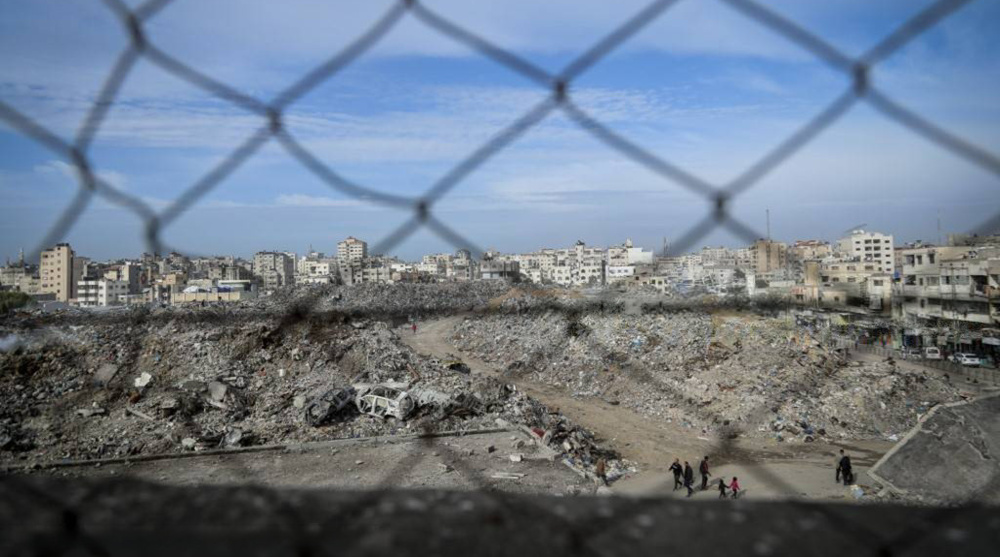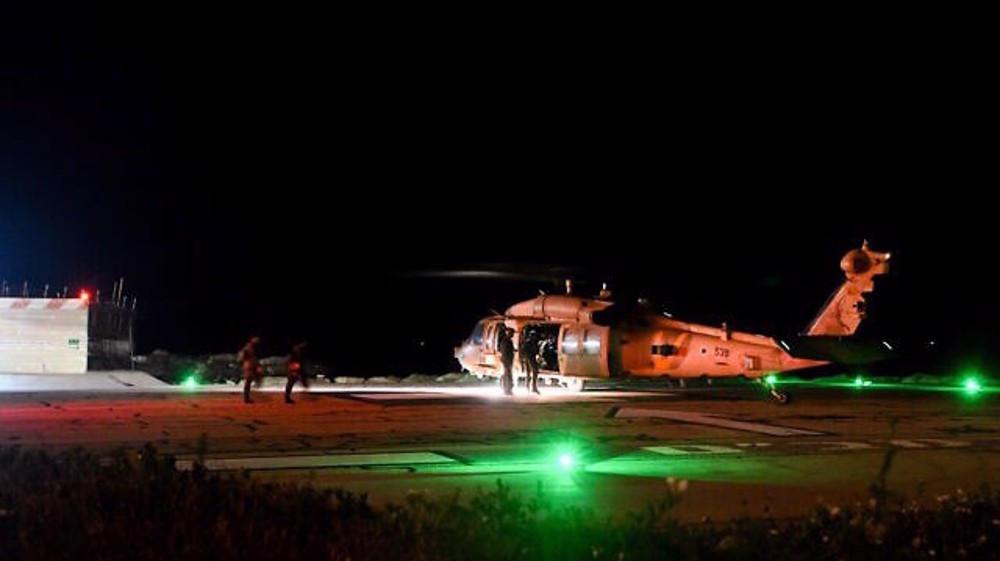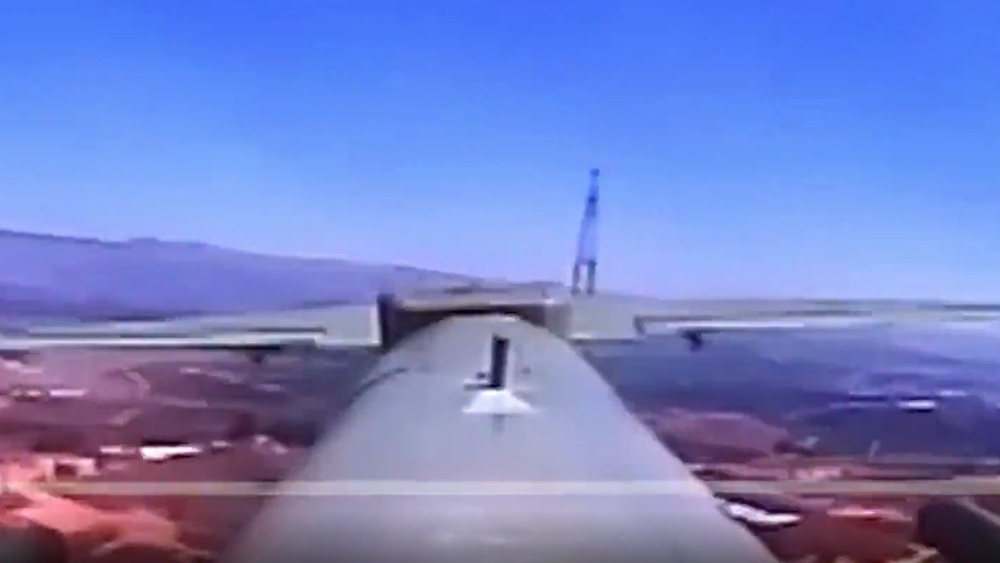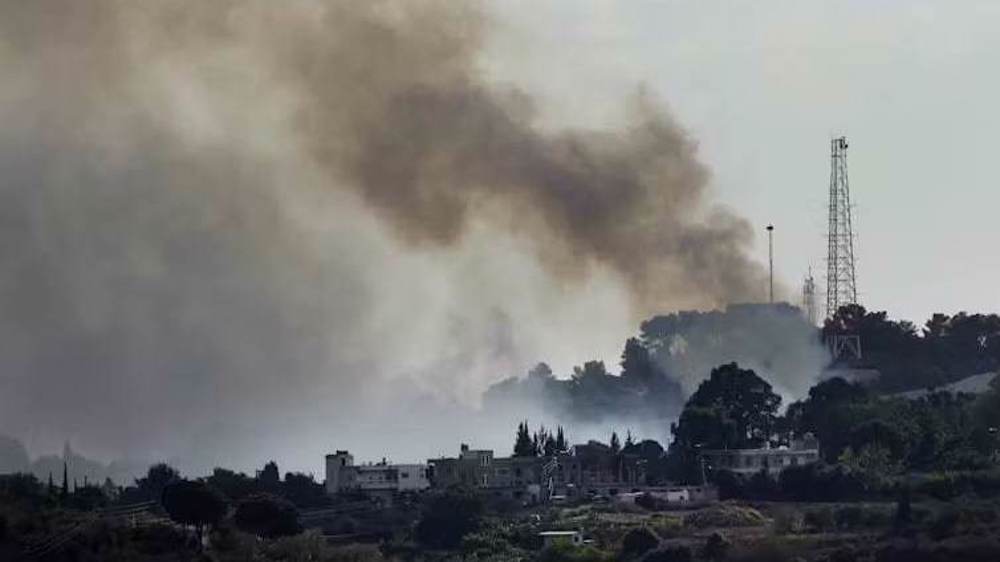Explainer: How Hezbollah drone evaded Iron Dome and hit Israeli military base in Haifa?
By Alireza Akbari
On Sunday evening, the Lebanese resistance movement Hezbollah launched an unprecedented drone attack on an Israeli training camp for the Golani Brigade in Binyamina, south of occupied Haifa, which killed at least four soldiers and injured more than 100 others.
Hezbollah’s suicide drones, flying “over 80 kilometers without interception,” penetrated multiple layers of Israeli military systems, reaching the camp, located about 55 kilometers from the Lebanese border, 60 kilometers north of Tel Aviv, and 30 kilometers south of occupied Haifa.
The strike, part of Hezbollah's ongoing Khaybar operations, was one of many launched by the Lebanese resistance, aimed at Israeli military and industrial sites in retaliation for the regime's unrelenting attacks on Gaza and Lebanon.
Unconfirmed reports say the Israeli army's chief of staff Herzi Halevi was present at the Golani Brigade base when a Hezbollah drone targeted it, with intense speculation about his whereabouts.
Israeli genocidal war against Palestinians in the Gaza Strip since October 7, 2023, has killed more than 42,000 people while the death toll from Israeli military strikes in Lebanon has crossed the 2,000 mark.
At least 20 Israeli soldiers are wounded, including 5 in critical condition, after a drone fired from Lebanon struck the Golani Battalion military base in occupied territories.
— Palestine Highlights (@PalHighlight) October 13, 2024
Follow Press TV on Telegram: https://t.co/fvRn3KuApw pic.twitter.com/kFiRrm022T
In a statement issued by Hezbollah’s operations room following the attack, the Lebanese movement confirmed that it launched dozens of rockets at various targets in the Nahariya and Akka areas to divert “Israeli air defense radars.”
Simultaneously, it deployed swarms of drones—some used for the first time—toward multiple locations in Akka and Haifa in the occupied territories.
“These advanced drones penetrated the Zionist air defense radars undetected and reached their target,” read the statement after the attack that grabbed headlines worldwide.
“The drones exploded inside the rooms where dozens of enemy officers and soldiers were gathered in preparation for participating in attacks against Lebanon. Among them were high-ranking officers.”
According to Hezbollah, the Israeli regime’s unrelenting assaults had expanded the Lebanese-based resistance movement’s target list to include "Haifa and beyond," in addition to Kiryat Shmona, Metulla, and other settlements along the Lebanese border.
A new barrage of rockets has been fired from Lebanon towards Haifa, occupied Palestine pic.twitter.com/RBvEdH7zFG
— Palestine Highlights (@PalHighlight) October 13, 2024
Following the operation, the deadliest for the Israeli military in several months, Hezbollah reiterated its warning, stating that settler homes being used as "gathering points for Israeli soldiers" and Israeli military bases located within settlement neighborhoods are "targets" for the group.
“The ‘Israeli’ enemy army is using settler homes in some settlements in northern occupied Palestine as gathering points for its officers and soldiers, and its military bases directing the aggression against Lebanon are located within settlement neighborhoods in major occupied cities like Haifa, Tabariyya, Akka, and others," the resistance movement noted.
"These houses and military bases are targets for the Islamic Resistance’s missile and air forces, and we warn settlers to stay away from these military gatherings for their safety until further notice.”
The operation inflicted a heavy blow to the Zionist entity, leaving at least four Israeli soldiers dead and over 100 others injured. The actual toll is believed to be much higher.
Immediately after the attack, the wounded were evacuated to Hillel Yaffe Medical Center in nearby Hadera, while others were transported to hospitals in Tel Hashomer, Haifa, Afula, and Netanya.
Israeli military confirms deaths of four soldiers in Hezbollah strike in southern Haifa pic.twitter.com/HSzD1mFKI5
— Palestine Highlights (@PalHighlight) October 13, 2024
Resistance is still on the right track
A broader analysis of Sunday’s operation reveals that Tel Aviv experienced an unprecedented blow from Hezbollah, disrupting Israel’s escalating acts of aggression against the Axis of Resistance in recent months, according to military analysts.
With the Israeli army failing to achieve its so-called “military goals” in the Gaza Strip, it had recently expanded its aggression towards Lebanon, launching airstrikes in Beirut under the pretext of targeting “Hezbollah headquarters and infrastructure.”
Sunday’s operation demonstrated Hezbollah's ability to breach the Israeli regime's much-touted Iron Dome and hit its predetermined target—a move many described as just the tip of the iceberg.
The attack on the Golani Brigade training camp was only one of dozens of operations carried out on Sunday, highlighting Hezbollah’s tactical formula for overwhelming Israel’s much-vaunted Iron Dome.
Throughout the day, Hezbollah executed complex operations, launching volleys of rockets, swarms of drones, and artillery shells against Israeli troop concentrations, barracks, and bases in locations such as Khallet Warda, Al-Labouneh, Hounin, Kfar Kila, Manara, Tsnobar, Zarit, Misgav Am, and Tira Carmel.
In a statement, Hezbollah confirmed it has launched drones against a training camp for Golani Brigade in Binyamina, south of Haifa.
— Palestine Highlights (@PalHighlight) October 13, 2024
Follow Press TV on Telegram: https://t.co/fvRn3KuApw pic.twitter.com/jbXoCQMsom
The wide range of targets, combined with the maneuverability of its drones, and unpredictable flight paths, has rendered Israel’s Iron Dome and other military systems largely ineffective.
On the same day, the Islamic Resistance in Iraq also launched two drone strikes on vital Israeli military sites in occupied Haifa, demonstrating the growing synergy in the Axis of Resistance.
Hezbollah’s post-operation statement underscored its operational and intelligence capabilities in the face of Israel’s much-hyped military power. The movement revealed that the attack was conducted using “information gathered by Hudhud drones on sensitive Zionist military targets and vital facilities in occupied Palestine,” specifically describing Binyamina as “a location unknown to many settlers.”
Notably, this operation carried out in response to the assassinations of Hezbollah leaders, including Sayyed Hassan Nasrallah, affirmed that the Lebanese resistance movement remains firmly on track.
Significance of the Binyamina base for Israeli regime
- Geographic location: Binyamina’s central position between Tel Aviv and Haifa makes it a crucial area for the Israeli military's rapid mobilization. Its proximity to major transport routes enhances logistical efficiency for the regime.
- Northern front aggression: The Golani Brigade is one of Israel’s elite infantry units which carries out most of the attacks, operating as a vital operational hub for the regime.
- Training and readiness: The base is critical for training and preparing troops for ground incursion, especially in challenging terrains like the Golan Heights.
- Elite unit: The Golani Brigade is known for its effectiveness and is considered one of Israeli regime's premier infantry forces.
Following the Sunday operation, various resistance fronts hailed Hezbollah’s successful strike.
Yemen's Ansarallah resistance movement congratulated Hezbollah for conducting the “most difficult” and qualitative military operation, praising the resistance fighters for establishing new deterrence equations and a balance of power against the Zionist entity.
Iraqi resistance conducts fresh drone strikes on Israeli targets in occupied territorieshttps://t.co/qJM1zB1qa7
— Press TV 🔻 (@PressTV) October 14, 2024
Kataeb Hezbollah (Iraq) resistance group also reaffirmed its support for Lebanon and its resistance, pledging support for Hezbollah and Lebanon's resistance against Israeli occupation.
“While we affirm that we will spare no effort or be stingy with blood or money in order to support Lebanon, its resistance and its people, we ask Allah to grant success to the fighters of the Axis, especially the men of the resistance in Hezbollah, to carry out more operations that contribute to breaking the will of the zionist-American enemy with His help and strength," it said.
Palestinian Fatah Al-Intifada Movement described the operation as a “strong and focused response,” calling it a slap in the face to the Zionist regime, while the Popular Resistance Committees echoed that the attack proved the resilience and determination of the Islamic Resistance.
Gaza-based Mujahideen Movement emphasized the operation's military and security significance, stating that it delivered a blow to Israel’s overconfidence and security preparedness.
Gaza-based Martyr Abu Ali Mustafa Brigades, the armed wing of the Popular Front for the Liberation of Palestine, stated that the operation exposed the “fragility” of the Israeli military, which mistakenly believed it could crush resistance through assassinations and destruction.
The Syrian Social Nationalist Party described the operation as part of an ongoing deterrence strategy against the enemy, especially in response to Israeli attacks in southern Lebanon, Bekaa, and Beirut.
Civilizations must unite against unilateralism, warmongering: Iran’s deputy FM
VIDEO | Resistance against occupation
China expands use of Iranian rail corridor for cargo transit
Ukraine’s Zelensky says open to dropping NATO bid for security guarantees
Israel kills 3 in south Lebanon as it threatens ‘wide-scale’ attack
VIDEO | Iran’s mega solar plant to power 2.5 million homes
Hamas warns against Israel's plans to 're-engineer' Gaza
VIDEO | South Koreans join migrants in Seoul to protest on Migrant Workers' Day















 This makes it easy to access the Press TV website
This makes it easy to access the Press TV website